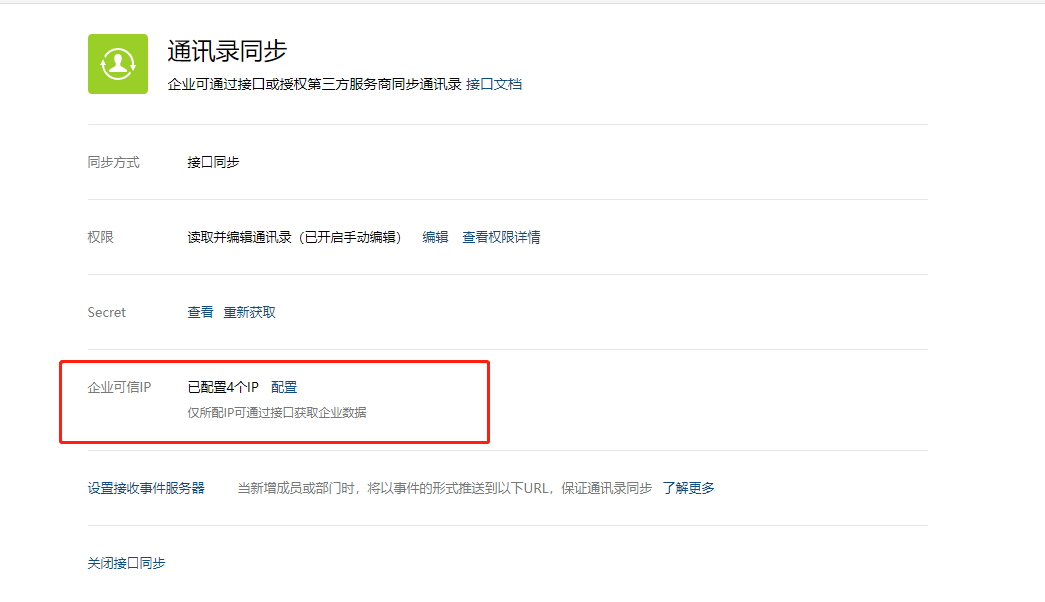接口自动化测试
霍格沃兹测试开发学社
目录
- 学习价值
- 直播前准备
- 知识点梳理
- 企业微信接口自动化测试实战演练
- 总结
学习价值



直播前准备
- 企业微信管理员账号:
- 准备环境
- python
- pytest
- requests
- jsonpath
- jsonschema
| 专题课 | 阶段 | 形式 | 章节 |
|---|---|---|---|
| 接口自动化测试 | L1 | 知识点 | 全部录播 |
| 接口自动化测试 | L2 | 知识点 | 多层嵌套响应断言 |
| 接口自动化测试 | L2 | 知识点 | 【实战】宠物商店接口自动化测试实战 |
| 接口自动化测试 | L3 | 知识点 | 整体结构响应断言 |
| 接口自动化测试 | L3 | 知识点 | 数据库操作与断言 |
| 接口自动化测试 | L4 | 知识点 | 多套被测环境 |
知识点梳理
接口自动化测试场景
接口自动化测试在企业中的实践





企业微信接口自动化测试实战演练
- 实战目标
- 被测产品介绍
- 需求说明
- 实战思路
- 实战演练
思考
- 写接口自动化测试用例时,你使用了 requests 库,那大概使用到了 requests 的哪里内容?
- 接口自动化实现思路?
- 其他接口都需要登录接口的信息,怎么去让这个登录的接口只在其他接口调用一次?
- 接口产生的垃圾数据如何清理?
- 接口响应值嵌套较深,获取不方便怎么办?
- 接口的返回字段特别多,结构特别复杂时,如何做断言?
实战目标
- 掌握接口自动化测试用例设计方法。
- 掌握接口自动化测试中的各种格式的请求构造与响应断言技巧。
- 掌握接口自动化测试中复杂断言方法。
- L1
- L2
- L3
- L4
- L5
成果展示
├── apis
│ ├── __init__.py
│ ├── base_api.py
│ ├── department.py
│ └── wework.py
├── config
│ ├── __init__.py
│ ├── config.yaml
│ └── secrets.yaml
├── tests
│ ├── __init__.py
│ ├── schema.json
│ ├── test_departments.py
│ └── test_department_flow.py
└── utils
├── __init__.py
├── log_utils.py
└── utils.py

被测产品介绍
- 企业微信
- 企业微信是腾讯微信团队打造的企业通讯与办公工具。
- 具有与微信一致的沟通体验,丰富的 OA 应用,和连接微信生态的能力。
- 可帮助企业连接内部、连接生态伙伴、连接消费者。专业协作、安全管理、人即服务。

需求说明
- 完成企业微信部门管理接口自动化测试。
- 环境准备
- 企业微信注册(有手机号即可)。
- 企业微信白名单配置:https://ceshiren.com/t/topic/22768

实战思路
相关知识点
| 形式 | 章节 |
|---|---|
| 知识点 | 接口自动化测试框架介绍 |
| 知识点 | 接口请求方法 |
| 知识点 | 接口请求参数 |
| 知识点 | 接口请求头 |
| 知识点 | 接口请求体-json |
| 知识点 | 接口响应断言 |
| 知识点 | json 响应体断言 |
| 知识点 | 【实战】宠物商店接口自动化测试实战 |
| 知识点 | 多层嵌套响应断言 |
| 知识点 | 【实战】宠物商店接口自动化测试实战 |
| 知识点 | 整体结构响应断言 |
| 知识点 | 数据库操作与断言 |
| 知识点 | 多套被测环境 |
接口文档分析
请求方式:GET/POST(HTTPS)
请求地址:https://qyapi.weixin.qq.com/cgi-bin/gettoken?corpid=ID&corpsecret=SECRET
请求包体:
...
参数说明:
...
权限说明:
...
返回结果:
...
参数说明:
...
接口自动化测试
- 接口鉴权
- 接口测试用例设计
- 接口自动化测试脚本
接口鉴权
接口测试用例

接口自动化测试脚本
- 单接口测试
- 接口业务场景测试
class TestDepartments:
def setup_class(self):
# 定义凭证
corpid = "xxx"
corpsecret = "xxx"
url = "https://qyapi.weixin.qq.com/cgi-bin/gettoken"
# 定义param
params = {
"corpid": corpid,
"corpsecret": corpsecret
}
# 发get请求
r = requests.request(method="GET", url=url, params=params)
# 获取 access_token 定义为实例变量
self.token = r.json()["access_token"]
def test_create_department(self):
url = "https://qyapi.weixin.qq.com/cgi-bin/department/create"
data = {
"name": "广州研发中心2",
"name_en": "RDGZ2",
"parentid": 1,
"order": 1,
"id": 3}
params = {
"access_token":self.token
}
r = requests.request(method="POST", url=url, params = params,json=data)
assert r.json()["errcode"] == 0
@pytest.mark.parametrize(
"name, name_en, parentid, order, depart_id, expect",
[
("技术部", "JISHU1", 1, 1, 2, 0),
("技术部1t6yujk9osjhynnj890lkmbg54321", "JISHU2", 1, 2, 3, 0),
("技术部23", "JISHU23", 1, 23, 1, 60123)
]
)
def test_create_department(self, name, name_en, parentid, order, depart_id, expect):
url = "https://qyapi.weixin.qq.com/cgi-bin/department/create"
data = {
"name": name,
"name_en": name_en,
"parentid": parentid,
"order": order,
"id": depart_id
}
params = {
"access_token": self.token
}
r = requests.request(method="POST", url=url, params=params, json=data)
print(r.json())
assert r.json()["errcode"] == expect
def test_create_department_exist(self):
# 1. 准备已存在部门
# 2. 查询部门创建成果
# 3. 有存在部门的情况下,创建相同信息的部门
# 4. 删除部门
# 5. 查询部门删除成功
# 6. 再次创建部门
# 7. 查询部门创建成功
接口测试框架封装
- ApiObject 设计模式:
- 封装。
- 分层。
- 把实现和测试用例以及断言进行拆分。
课堂练习
将代码进行优化,要求:
- 日志打印。
- 接口和业务(用例)分离。
- 添加 token 的过程不要体现在接口中。
复杂断言优化
- 多层嵌套响应断言
- 整体结构响应断言
- 数据库断言
多层嵌套响应断言
- jsonpath:https://github.com/json-path/JsonPath
- 解析 JSON 数据的表达语言,与 XPath 表达式语言类似。
- 使用场景:断言的响应字段层级嵌套比较深,或者响应层级可能发生变化。
- 工具:https://pypi.org/project/jsonpath/
import requests
from jsonpath import jsonpath
def test_json_path():
r = requests.get("https://ceshiren.com/categories.json")
name_list = jsonpath(r.json(), '$.category_list.categories[0].name')
assert name_list[0] == '提问区'
name_list = jsonpath(r.json(), "$..name")
assert '提问区' in name_list
整体结构响应断言
- 结合录播:
- 《整体结构响应断言》
# 整体结构响应断言
class SchemaUtils:
@classmethod
def generate_schema(cls, obj, file_path):
'''
生成 json schema 文件
:param obj: 要生成 schema 的 python 对象
'''
builder = SchemaBuilder()
# 把预期响应添加到 builder 中
builder.add_object(obj)
# 生成 jsonschema
schema_content = builder.to_schema()
print(schema_content)
# 写入 json 文件
with open(file_path, "w", encoding="utf-8") as f:
json.dump(schema_content, f)
@classmethod
def schema_validate(cls, obj, schema):
'''
对比 python 对象与生成的 json schema 结构是否一致
:param obj: json 格式对象
:param schema: 生成的 json schema 结构
:return: 传入的 json 格式对象符合 schema 格式则返回 True,反之返回 False
'''
try:
validate(instance=obj, schema=schema)
return True
except Exception as e:
print(f"schema 校验异常======>{e}")
return False
数据库断言
- 数据库断言:pymysql:
- 使用场景:验证数据操作的实际结果是否正确。
# 数据库
def query_db(cls, sql, database_info):
# 连接数据库
conn = pymysql.Connect(**database_info)
# 创建游标
cursor = conn.cursor()
# 执行 SQL 语句
cursor.execute(sql)
# 获取查询结果
datas = cursor.fetchall()
print("查询到的数据为:", datas) # 获取多条数据
# 关闭连接
cursor.close()
conn.close()
return datas
多环境切换场景优化
- 结合录播:
- 《多套被测环境》
接口自动化测试常见问题(一)
- 写接口自动化测试用例时,你使用了 requests 库,那大概使用到了 requests 的哪里内容?
- 知识点梳理。
- 接口自动化实现思路?
- 练习思路。
- 其他接口都需要登录接口的信息,怎么去让这个登录的接口只在其他接口调用一次?
- 获取 token 的之前添加判断,如果存在则不获取。
接口自动化测试常见问题(二)
- 接口产生的垃圾数据如何清理?
- 方式一:专门准备一个自动化测试环境,测完直接做数据回滚
- 方式二:每次创建完数据,都调用 delete 接口删除
- 注意:尽量不要用数据库直接删除,容易引起 bug
- 接口响应值嵌套较深,获取不方便怎么办?
- JsonPath 表达式提取。
- 接口的返回字段特别多,结构特别复杂时,如何做断言?
- JsonSchema 做结构断言。
总结
- 接口自动化知识点梳理。
- 企业微信实战练习。
- 接口自动化测试常见问题的梳理。
作业
